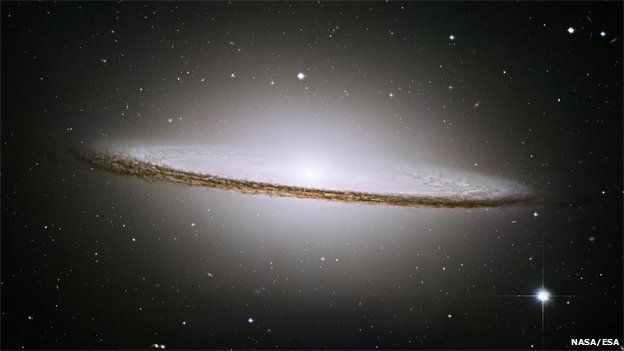Hubble's star refuses to fade
- Published
- comments

Scientists say they have every hope that the Hubble Space Telescope will keep working for at least another five years, perhaps more.
The famous observatory is about to celebrate its 25th birthday.
Key figures on the mission told a major conference in California that the instruments it uses to detect objects on the sky are all in perfect health.
A big portion of Hubble's time is now dedicated to finding the very first stars to shine in the Universe.
After its ignominious start in 1990 when it launched with a mirror that could not focus properly, the space telescope has gone on to notch a list of remarkable discoveries.
From confirming there were gigantic black holes in space to refining the age of the Universe - Hubble has had a part in many of the big breakthroughs in modern astronomy.
The fact that it still does peerless science is down to all those visits from astronauts who repaired and upgraded its systems.
After the retirement of the space shuttle, those sorts of interventions are no longer possible but Hubble is said to be in superb shape.
"The last servicing mission was in 2009 and the astronauts did an incredible job," said Dr Jennifer Wiseman, Nasa's Hubble project scientist.
Hubble project scientist Dr Jennifer Wiseman: "Observatory time is heavily oversubscribed"
"They put in new instruments that we had developed, and batteries and gyroscopes – they basically refreshed the observatory to a terrific state."
In the past, Hubble suffered from degradation in its six gyroscopes – the spinning devices that allow it to point very precisely in space. Five years on from the installation of the current batch, only one has so far failed.
Electronics in space must cope with a very harsh radiation environment, and a major malfunction could happen at any moment. But right now, the future for Hubble looks very strong.
"At whatever point that it's no longer able to produce science, or to produce very good science - we'll have to make that heart-wrenching decision to stop operating the observatory, but we don't see any reason why that should be anytime soon," Dr Wiseman said.
She was speaking with other panellists at a special Hubble 25th anniversary session at the annual meeting of the American Association for the Advancement of Science.
The conference was told that the big desire is to see Hubble operate alongside its successor, the James Webb Space Telescope, for at least a couple of years.
Webb is due to launch in 2018, so at the moment that objective looks well within reach and would allow for a smooth transition.
Hubble is currently engaged in what is called the Frontier Fields programme.
By looking towards large galaxy clusters, it can use their gravity to zoom in on even more distant objects in the Universe.
This so-called "gravitational lensing" technique allows the telescope to probe galaxies it could not normally see – targets that are 10-50 times intrinsically fainter than any seen before.
Some of these are likely to be the founding galaxies in the Universe, which came together just a few hundred million years after the Big Bang.
Dr Frank Summers from the Space Telescope Science Institute said the project was considered such a high priority that a large chunk of Hubble’s observing opportunity had been reserved for it.
"Frontier Fields is using 840 orbits on Hubble. We have 3,000 orbits a year to give away, so that is a tonne of time," he told the meeting.
Although Hubble has to use a "zoom lens" to see these distant objects, James Webb will not. Its larger mirror and advanced infrared detectors mean it will see them directly. But Hubble has been asked to blaze the trail, and the longer it can work the more targets it will find for Webb to follow up.